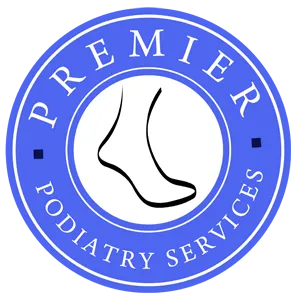- Welcome! >
- Articles >
- Nails and Skin >
- Wounds/Ulcers
Ulcers, which are open sores in the skin, occur when the outer layers of the skin are injured and the deeper tissues become exposed. They can be caused by excess pressure due to ill-fitting shoes, long periods in bed, or after an injury that breaks the skin. Ulcers are commonly seen in patients who have diabetes, neuropathy or vascular disease. Open wounds can put patients at increased risk of developing infection in the skin and bone.
The signs and symptoms of ulcers may include drainage, odor, or red, inflamed, thickened tissue. Pain may or may not be present.
Diagnosis may include x-rays to evaluate possible bone involvement. Other advanced imaging studies may also be ordered to evaluate for vascular disease, which may affect a patient’s ability to heal the wound.
Ulcers are treated by removing the unhealthy tissue and performing local wound care to assist in healing. Special shoes or padding may be used to remove excess pressure on the area. If infection is present, antibiotics will be necessary. In severe cases that involve extensive infection or are slow to heal, surgery or other advanced wound care treatments may be necessary.
-
Bone/Joint/Tendon
- Accessory Navicular Syndrome
- Achilles Tendon Rupture
- Ankle
- Arch Pain
- Arch Supports
- Bone Healing
- Bone Infection
- Bone Tumors in the Foot
- Brachymetatarsia
- Bunions (Hallux Abducto Valgus)
- Bursitis
- Calcaneal Apophysitis (Sever's Disease)
- Calf Pain
- Capsulitis of the Second Toe
- Cavus Foot (High-Arched Foot)
- Charcot Foot
- Chronic Ankle Instability
- Clubfoot
- Cold Feet
- Common Disorders of the Achilles Tendon
- Drop Foot
- DVT (Deep Vein Thrombosis)
- Extra Bones
- Fallen Arches
- Fifth Metatarsal Fracture
- Flatfoot
- Foot Arthritis
- Foot Drop
- Fracture
- Gangrene
- Gout
- Haglund's Deformity
- Hallux Rigidus
- Hammertoes
- Heel Pain (Plantar Fasciitis)
- High-Arched Foot
- Intermetatarsal Neuroma
- Intoeing
- Joint Pain in the Foot
- Joint Swelling in the Foot
- Lisfranc Injuries
- Os Trigonum Syndrome
- Osteoarthritis of the Foot and Ankle
- Osteomyelitis (Bone Infection)
- Osteopenia
- Osteoporosis
- Peroneal Tendon Injuries
- Pigeon-toes
- Posterior Tibial Tendon Dysfunction (PTTD)
- R.I.C.E Protocol
- Restless Legs
- Rheumatoid Arthritis in the Foot and Ankle
- Sesamoid Injuries in the Foot
- Shin Splints
- Swollen Feet
- Synovitis
- Tailor's Bunion
- Talar Dome Lesion
- Tingly Feet
- Tired Feet
- Toe Walking
- Turf Toe
- Varicose Veins
- Webbed Toes
-
Nails and Skin
- Athlete's Foot
- Black Toenails
- Callus
- Contact Dermatitis
- Corns
- Cracked Heels
- Dermatitis
- Dry Heels
- Eczema of the Foot
- Foot Bumps
- Foot Lumps
- Foot Odor
- Foot Rash
- Frostbite
- Fungal Nails
- Ganglion Cyst
- Heel Fissures
- Inflammation: Acute
- Ingrown Toenails
- Malignant Melanoma of the Foot
- Plantar Fibroma
- Plantar Wart (Verruca Plantaris)
- Pump Bump (Hallux Rigidus)
- Puncture Wounds
- Rash
- Raynauds Phenomenon
- Skin Cancer of the Foot and Ankle
- Smelly Feet
- Sweaty Feet
- Thick Toenails
- Warts
- White Toenails
- Wounds/Ulcers
- Wounds-Puncture
- Yellow Toenails
- Diabetic Health
-
Fitness and Your Feet
- Baseball Injuries to the Foot and Ankle
- Basketball Injuries to the Foot and Ankle
- Field Hockey Injuries to the Foot and Ankle
- Football Injuries to the Foot and Ankle
- Golf Injuries to the Foot and Ankle
- Lacrosse Injuries to the Foot and Ankle
- Rugby Injuries to the Foot and Ankle
- Running and Track Injuries to the Foot and Ankle
- Soccer Injuries to the Foot and Ankle
- Softball Injuries to the Foot and Ankle
- Tennis Injuries to the Foot and Ankle
- Volleyball Injuries to the Foot and Ankle
- Orthotics and Footwear
- Compartment Syndrome
- Deep Vein Thrombosis (DVT)
- Equinus
- Instructions for Using Crutches
- Staph Infections of the Foot
